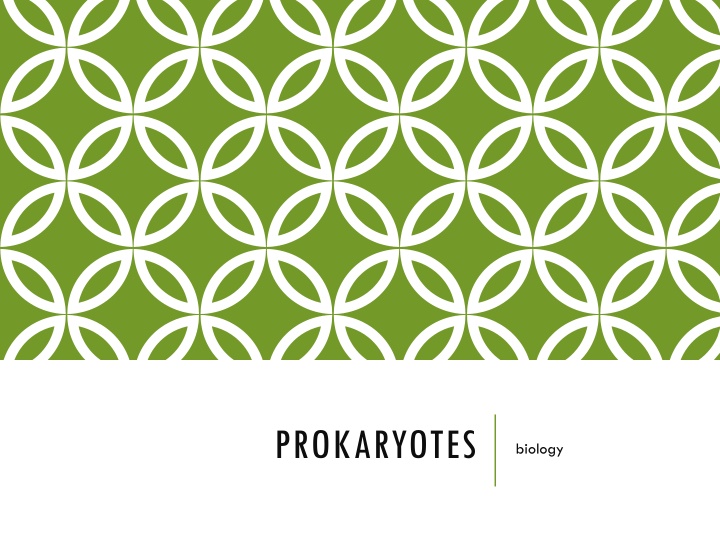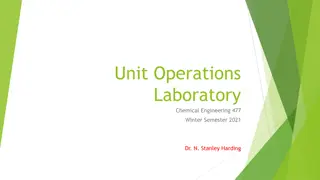
Prokaryotes: Characteristics and Types
Explore the world of prokaryotes, single-cell organisms formed by prokaryotic cells. Learn about their unique characteristics, such as the central and peripheral regions in the cytoplasm, nucleoid structure, lack of organized cell wall, and the distinction of ribosomes. Discover the diversity of bacteria, the most common type of prokaryotes, and their various forms such as spherical, rod-shaped, and spiral bacteria.
Download Presentation

Please find below an Image/Link to download the presentation.
The content on the website is provided AS IS for your information and personal use only. It may not be sold, licensed, or shared on other websites without obtaining consent from the author. If you encounter any issues during the download, it is possible that the publisher has removed the file from their server.
You are allowed to download the files provided on this website for personal or commercial use, subject to the condition that they are used lawfully. All files are the property of their respective owners.
The content on the website is provided AS IS for your information and personal use only. It may not be sold, licensed, or shared on other websites without obtaining consent from the author.
E N D
Presentation Transcript
PROKARYOTES biology
SINGLE CELL ORGANISMS FORMED BY PROKARYOTIC CELLS ARE CALLED PROKARYOTES
In the cytoplasm of prokaryotic cell two regions are distinguished: Central (Greek : prokaryon, from where its name is derived ); and peripheral( or pro-cytoplasm ) Prokaryotes do not have organized cell wall as eukaryotes have, but it is diffusively distributed in the central region and it is called nucleoid . In this region, one chromosome is placed , formed only from DNA which is the carrier of the genetic information.
Peripheral region (protoplasm) has higher density than central one and there are no other organelles but ribosomes. Ribosomes in prokaryotic cells are distinguished from those in eukaryotic ones by sedimentation constant , which in prokaryotic ribosomes is 70 S , and in eukaryotic is 80 S. More prokaryotic representatives have cell type( as bacteria) Unlike eukaryotes , in their composition there is no carbohydrate cellulose. Prokaryotic cells , are mainly separated by a simple division and there is no division device. They can create loose colonies because they do not have high capacity to unite with other cells. They have highlighted capabilities to adjust to the conditions of living , they are characterized with a fast growing and short time for regeneration and due to that they are widely spread.
BACTERIA Most of prokaryotes are bacteria. Bacteria are tiny organisms consisting of only one cell, which is more simple and significantly different from plant and animal cells. They live and multiply where they can find source for energy of life. Some of them live within or on some other living being , regardless they are harmful ( causing illnesses) or useful , for example , protecting from other harmful bacteria. Most of bacteria, nevertheless, live within or on dead plants or animals and their effect causes decay.
TYPES OF BACTERIA According to the form of cell , bacteria are divided into : Spherical cells; Rod (germs); Spiral (spirals and spirochetes) . Beside these forms there are many others so called transitional forms. Such as : Coccobacili ; Vibrio ; Streptococci ; Staphylococci .






















